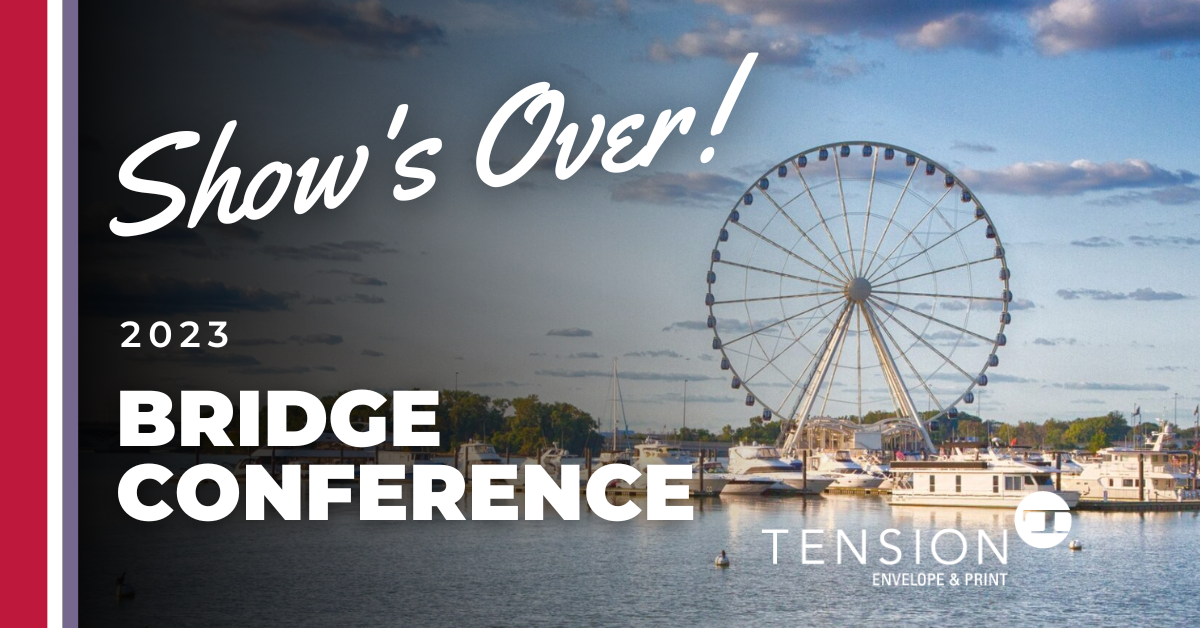The 2021 Bridge Conference was an educational event like I had not experienced before, this being my first virtual conference. Held each year in the Washington, D.C. area, it attracts seasoned and new fundraising professionals and nonprofit professionals alike.
This year’s virtual event boasted renowned speakers in their fields who shared real-world experiences with donors as they relate to direct mail. To me, one of the most intriguing topics covered how mailers can turn to psychology to boost direct mail campaign results. Here’s what Bernard Ross, an internationally regarded expert in strategic thinking and personal effectiveness, had to say about psychology driving direct mail.
Kahneman’s System 1 and System 2
In Ross’ presentation, the ideas from Daniel Kahneman’s theory of decision-making, “System 1” and “System 2,” make an impact in charitable direct mail campaigns. Kahneman’s idea is that there are two systems we use to make decisions.
System 1 is the emotional, implicit, fast, intuitive way we make decisions. For example, “Should I put on these socks or those socks?” or “Should I have cereal or eggs for breakfast?” Those are decisions that need to be made quickly so no one is late for work or spends all day thinking about what to wear or eat.
System 2 is the slow, analytical and rule-based way of decision making. That system is used for much more serious decision making: “Should I stay in this job or not?,” or “Should I stay in this relationship?” These decisions require time and are not to be rushed. Ross connected this theory with how mail recipients come to their decision to donate or patronize a business.
System 1 and 2 in Action
Ross’ presentation shared an example from an organization called Save the Children, where there were two examples of a charitable donation campaign letter and elaborated on their outcome.
Letter one focused exclusively on Rokia, a seven-year-old girl in Mali. It described how donations would feed children like Rokia and how “her life will be better because of your financial gift.” Letter one triggered an emotional response from potential donors who could connect with Rokia.
Letter two focused on food shortages across Malawi and the Zambian rainfalls that have dropped maize production by 42%, causing mass hunger for three million Zambians. Letter two had much more data and focused on several different groups of people.
Letter one is an example of decision making that would fall under Kahneman’s System 1. This is because seeing the story of helping one child feels like an easy decision to make, and like donors are making a real difference in one person’s life. Letter two is a classic example of System 2, because it gave so many numerical details and focused on many groups. Letter two gave a rational reason for engaging with this cause, as opposed to letter one.
Campaign Results
Donors who read Rokia’s story (letter one) alone donated an average of $2.38, while those who read letter two donated an average of $1.43. This means that System 1 using an emotional appeal was more effective than the System 2 example that appealed to donor’s logical side.
Nonprofits can apply this to their own direct mail campaigns. Focusing on people and donors’ ability to connect with one person may lead to higher responses or donations. Invoking an emotional response as opposed to a logical one may be the difference between gaining a new customer or losing a great lead.
Heuristics in Direct Mail
A heuristic is any approach to problem solving that employs a practical method. One heuristic technique is known as “framing” where individuals react depending on how a choice is presented. One example from Ross’ presentation is from a charity in the United Kingdom called Oxfam, where donors were presented three options for making a donation online.

When looking at the online donation portal, option 1 was located on the far left and donors could make a €25 donation. Option 2 was in the middle with a banner underneath saying in bright orange and all caps “DONATE NOW,” and donors could make a €50 donation. Option 3 was on the far right and donors could make a donation of €100. Now, which donation do you think Oxfam wanted, and which do you think donors selected? If you said Option 2, you’re correct!
Option 2 used framing to guide donors into making a decision that they were comfortable with using the “Goldilocks effect.” Option 1 was too small of a donation to feel impactful and Option 3 might have felt like a financial stress for some donors. The magical combination of framing the desired donation amount with the dollar amount being feasible made for a win-win situation for Oxfam.
These same practices can be applied to any direct mail campaign. Making the most of the psychological process donors use to make decisions combined with incorporating strategic graphics is key to getting the desired result of a campaign.
Learn More
To read more about our 2021 Bridge experience, Karen Loggia, Tension’s Director of Marketing and Bridge attendee, wrote a post-conference blog which you can find here. Tension is grateful to attend the 2021 Bridge Conference and we look forward to this time next year, when we can attend in person!
Visit our events page to learn about the 2022 Bridge Conference.




